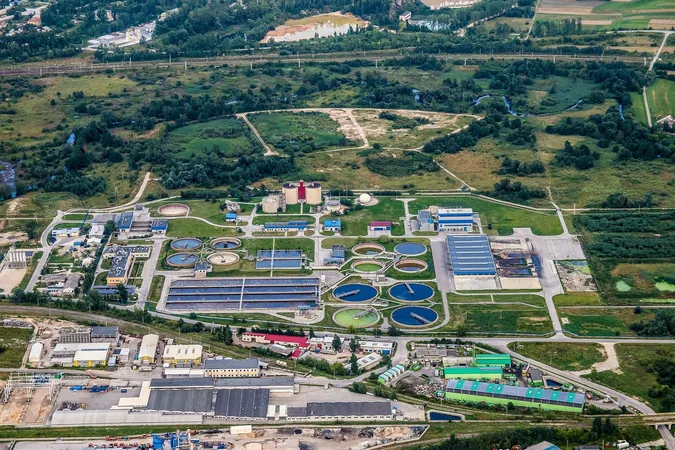
Unraveling the Mysteries of the Canada Lynx: A Deeper Look at Predator-Prey Dynamics
2025-05-14
Author: Wei
The Classic Predator-Prey Relationship
If you crack open any ecology textbook, you're bound to come across the Canada lynx and the snowshoe hare—a dynamic duo exemplifying the intricate dance between predator and prey. Known for its striking appearance, the Canada lynx (Lynx canadensis) sports a lush coat, tufted ears, and oversized paws, all adaptations for life in deep snow. Its fate is closely tied to the snowshoe hare (Lepus americanus), leading to captivating wildlife photography featuring these majestic cats in pursuit of their furry counterpart.
Cycles of Abundance: Nature's Rhythm
In nature, the snowshoe hare undergoes dramatic population booms and busts every eight to ten years. Following this pattern, lynx populations fluctuate in response, creating this captivating ecological rhythm. This phenomenon is not just observed but is steeped in Indigenous traditions and extensive fur-trapping data. Today, researchers are investigating how human intervention—through forestry, climate change, and wildfires—might be disrupting this age-old cycle.
Decades of Observation: Insights from the Yukon
Professor Stan Boutin of the University of Alberta has spent nearly 50 years studying this lynx-hare narrative in the Kluane region of Yukon, Canada. Over his tenure, he’s witnessed the hare populations surge and plummet five times, always followed by the lynx. Currently, he notes, "We’re in a heavy increase phase. Predictions suggest hare numbers will remain high this spring before the inevitable crash arrives—it’s always thrilling to witness."
Influence of Climate Change on the Cycle
Recent studies reveal concerning trends. Kluane has seen a one-third reduction in maximum snow depth over the past two decades. While both the lynx and hare thrive in snowy conditions, coyotes, another predator, face disadvantages in deep snow but gain an advantage in thinner conditions. With climate change affecting snowfall patterns, researchers speculate it could alter the predator-prey balance.
A Technological Revolution in Research
Innovative technologies, such as biologging, allow scientists to monitor lynx behavior more intricately than ever before. For instance, doctoral researcher Emily Studd is using accelerometers and audio recorders on lynx to capture data on their hunting behavior. This approach reveals not just what they hunt but how much energy they expend—unearthing new dimensions of this predator-prey dynamic.
Tracking the Population Waves in Alaska
In Alaska, researcher Derek Arnold sought to determine if lynx and hare populations monitored across various locations experienced synchronized cycles or if the peak shifted in a migratory wave. His findings suggest that when hare populations dip, lynx disperse widely, traveling thousands of kilometers in search of better hunting grounds—a phenomenon that may contribute to varying population dynamics across the region.
Impact of Forestry and Wildfires on Lynx and Hares
Amid these ecological changes, forestry practices and wildfire patterns also dramatically affect habitat. Researchers are now urging for better forest management strategies that mimic natural disturbances, crucial for maintaining the delicate ecosystem balance necessary for thriving lynx and hare populations.
The Future Is Uncertain: Climate Challenges Ahead
Despite concerns, there remains hope that certain core ranges of the Canada lynx will continue to maintain their ecological cycles, albeit with caution toward climate change. However, as changing wildfire dynamics threaten the landscape, the message is clear—adaptive management is essential to ensure the survival of these iconic species and the ecosystems they inhabit.
Conclusion: The Need for Continued Vigilance
Researchers urge that understanding the interplay of immigration, predation, and climatic factors will be vital for conserving the Canada lynx. With increasing pressures from climate change and habitat disruption, the future of these beautiful cats hangs in the balance—highlighting the urgent need for ongoing research and action.



 Brasil (PT)
Brasil (PT)
 Canada (EN)
Canada (EN)
 Chile (ES)
Chile (ES)
 Česko (CS)
Česko (CS)
 대한민국 (KO)
대한민국 (KO)
 España (ES)
España (ES)
 France (FR)
France (FR)
 Hong Kong (EN)
Hong Kong (EN)
 Italia (IT)
Italia (IT)
 日本 (JA)
日本 (JA)
 Magyarország (HU)
Magyarország (HU)
 Norge (NO)
Norge (NO)
 Polska (PL)
Polska (PL)
 Schweiz (DE)
Schweiz (DE)
 Singapore (EN)
Singapore (EN)
 Sverige (SV)
Sverige (SV)
 Suomi (FI)
Suomi (FI)
 Türkiye (TR)
Türkiye (TR)
 الإمارات العربية المتحدة (AR)
الإمارات العربية المتحدة (AR)